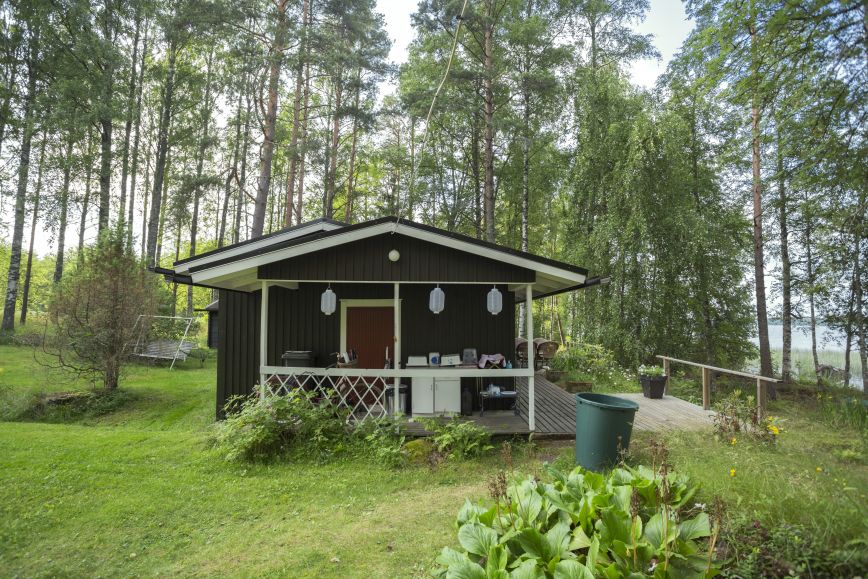In the spring, you may have plans to build a new shed in the yard or passing ownership of the cottage plot to the next generation. This is when it may be necessary find the markers for the property line.
Plot boundaries
“If the markers are in place and you know where they are, you have nothing to worry about. A boundary marker in its original location on the ground is always a stronger indicator of the property line than a line on the map,” says Service Manager Panu Karhu from the National Land Survey.
If you find a significant error on the map regarding your property line, it is easy to give feedback through the National Land Survey’s feedback tool on MapSite. With it, you can directly indicate the point on the map the feedback is about.
If the boundary marker has been lost or property line is otherwise unclear, we recommend applying for a demarcation from the National Land Survey. In the demarcation process, we determine the location of the boundary and build the necessary boundary markers to replace the missing ones.
Additional land area formed on the shore
Due to land uplift or the lowering of the water level, the water’s edge may retreat, resulting in an additional land area on the shore, or a reliction. However, the boundaries of the property do not automatically change when the natural environment changes.
Usually the cottage owner has the right to redeem the land that has emerged on the shore. This should be considered at least if you are planning earthworks or wish to restore the shore or build something.
“If you have questions about the ownership of a reliction area, don’t worry: its acquisition is fairly easy. In Finland, 500–800 reliction areas are acquired every year. On average, the acquisition process takes 5–8 months,” says Mauri Asmundela, the Director of Expropriation and Valuation at the National Land Survey.
Road rights
If your cottage road passes through someone else’s land, it is possible to establish a right of use, i.e. an encumbrance for the land owned by the other party.
Road rights may be private agreements or formally established. Private agreements only apply to the persons in question.
“We recommend formally established encumbrances, as they are permanent rights that are recorded in the cadastral register. That way, the right is retained even if the owner of the property changes,” says Panu Karhu.
Valid encumbrances are indicated in a cadastral register extract or on a cadastral index map. Sometimes the determination of road rights requires a private road survey.
Basic property information and coordinates
You can check your own plot’s basic information through the NLS e-service. Sign in with your online banking codes to see the properties you own as well as their rights of use and surface areas. The service is free of charge.
For a fee, you can also order extracts, certificates and maps of your properties through the online service.
The coordinates of the cottage for emergencies can be obtained from MapSite.
“Type the address in the field that opens from the magnifying glass, then click on the XYº button on the right and select ETRS89 geographic (~ WGS84) as the coordinate system,” advises Panu Karhu.
Further information
Jani Hokkanen, Director, Information Services, National Land Survey, +358 40 707 7872, firstname.lastname@nls.fi
If you want to find out more about the road rights of your cottage plot, contact NLS customer service.


